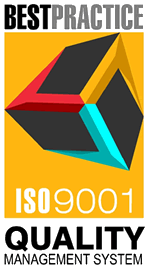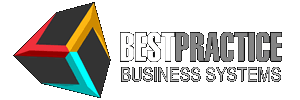QUALITY SYSTEM CONSULTING
Often, when I meet people for the first time and explain that I’m a quality consultant I get a blank look. People understand the need for a safety consultant because safety is a legal requirement, but very often they don’t appreciate the importance of quality management or the role it plays in business development.
 The word quality is a problem. To the vast majority of people quality is either a degree of excellence in a product or a distinctive trait in a person. I’m often told “they have a quality management system and their product is rubbish, so why should I have one?” That’s a good point and hard to dispute without the facts.
The word quality is a problem. To the vast majority of people quality is either a degree of excellence in a product or a distinctive trait in a person. I’m often told “they have a quality management system and their product is rubbish, so why should I have one?” That’s a good point and hard to dispute without the facts.
The aim of any business management system is to achieve results that delight customers, who then create a demand for the product or service, which consequently has to be managed. This is not complicated. The question is how to achieve it. This is where ISO9001 and process management comes in.
PROCESSES AND PROCEDURES
ISO9001 focuses on those processes of the business management system that deliver customer satisfaction.
· Processes have defined objectives; inputs, constraints and resources; activities, behaviours, controls, interfaces with other processes, and outputs; outcomes and results in adequacy, efficiency and effectiveness. Processes need to be managed. A process should be carried out by competent people or machines executing specific activities with adequate resources to produce an objective. The order in which the activities are carried out can be defined by a procedure.
· Procedures are to do with tasks; processes with results. Procedures alone will not guarantee that the objective will be produced. Incompetent people in a poor working environment, inefficient machines and inadequate resources will never produce the required objective. So the procedures need to be managed, and in ISO9001 this is the Quality Management System. This must encompass the entire organisation and, make no mistake, requires senior management buy-in for it to be effective.
In essence then, the quality management system consists of procedures that function in a process managed environment.
Everybody knows that you need competent people to carry out work procedures; that you need suppliers who are reliable; that you need to calibrate machines regularly; that you need to get customer feedback and to handle complaints effectively; and that you need to have continual improvement. You don’t need to be told this. The problem with most businesses is that they don’t manage it. ISO9001 gives you the template for achieving it.
ENOUGH OF THE QUALITY-SPEAK
Let’s explore what we can do together to establish a Quality Management System (QMS). In simple terms the QMS is made up of three parts; the quality manual, written procedures, and documents required by the procedures. The quality manual communicates the vision, values, policies and objectives of the organisation. It shows who does what. We prefer the owners of each procedure to have a positive input into the documenting of the written procedures. We call this Reverse Process Management. We will incorporate as many of your own documents as we can, and will assist you in creating any others that are needed.
HOW IT’S DONE
For me it is truly exciting to meet a new customer for the first time and with it the opportunity to assist them in transforming their business management system into one that meets the requirements of ISO9001.
· I know that it is difficult for an owner to accept external advice, so I use a carefully designed program that allows the customer to slowly understand the advantages that a quality management system offers them; and there are certainly many. This involves a sharing of information about how the owner runs the business and an assessment of the gaps with an ISO9001 system.
· There is homework for the owner putting together an employee training needs analysis, an approved supplier list and in carrying out a quality assessment of the suppliers. An action list is established at the end of each meeting so that each of us understands what is expected of them before the next meeting.
· Usually by the third of five meetings the owner begins to understand how a quality management system works.
· After the fifth meeting the QMS has been established, including 18-20 written processes that handle the core activities of the system.
· The first Management Review Meeting (MRM) takes place during the fifth meeting as does the internal auditing training of the Quality Representative.
· It then takes 3-4 weeks for the Quality Representative to ensure that the system is operational and that all non-conformances have been found and corrective action established.
· The MRM is the key to establishing how well the organisation has fulfilled its objectives. This is the time that the QMS bares its soul; where problems are discussed and issues resolved. It is the time for a serious discussion on where the organisation is heading and recommendations for improvement are shared.
To understand how ISO9001 can transform your approach to business you have to join the club. Have a read through our case studies and watch the videos. See if you can feel the vibe. Check out any issues in our FAQ section, and understand the time and cost investments required. Hope to hear from you soon.

